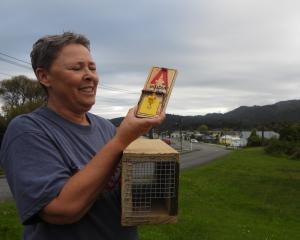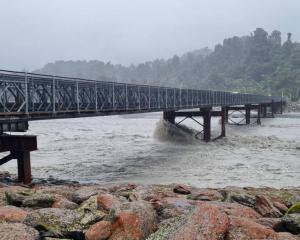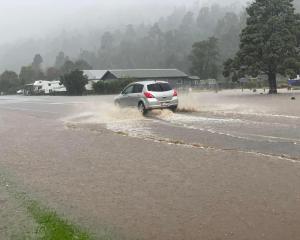Crossing the Cascade River in South Westland is something that would be beyond even a 1970s Holden station wagon, it seems.
Clarifying a trip he made in 1973, former Hokitika chief surveyor Owen Amor told the Otago Daily Times this week his trip by Holden ended at the Cascade River, not further south at Big Bay.
Mr Amor's determination in 1976 that a legal road exists from Haast to Hollyford is an important piece of the case being made by the Haast-Hollyford Highway Ltd for a toll road to be built through the area to link the West Coast and Milford Sound more directly.
In an email to the ODT this week, Geoff Morrison of Echuca, Victoria, Australia, pointed out the Cascade River had no bridge and could not be crossed by car.
However, as a resident of Barn Bay 12km south of the Cascade River from 1969 to 1973, he was well aware of a bulldozer track that went as far south as the Pyke River.
Mr Morrison said the track was put in by the Nickel Spoon Mining Company while prospecting for minerals in the Red Hill Range.
The track went through the bush to the Hope River, which flows into Barn Bay, and then down the beach to Sand Rock Bluff, over the bluff and back on to the beach to Gorge River.
It eventually reached Big Bay and the Pyke River before continuing up the Red Hill Range.
Mr Morrison said while deerstalking and crayfishing in the area he had walked the track and said ''believe me, Mr Amor didn't get south of the Cascade River''.
Mr Morrison said he would fly into airstrips created by the mining company along the track that was formed by the bulldozer.
''If there was a track which was usable by a four-wheel-drive vehicle we would have used that instead of flying everything into Barn Bay including the hut, tractor, cray pots, fuel, generator etc.''
In his book, ''An Historic and Scenic Journey Along the Coast of Westland'', Mark Pickering wrote the mining company promised ''large quantities of tin'' but soon ''faded from the scene''.
A bigger company, Kennecott, which was interested in the asbestos possibilities of the Red Hills, drove two large bulldozers from Barn Bay to Big Bay in about 1973-74, ''trundling steel sledges with accommodation huts and fuel behind them''.
''They took about five months to get to the Pyke River, and the displaced lines of boulders can still be seen in many places.''
In an email to the ODT, Judy Knox, of Mosgiel, said as a member of the Otago Tramping and Mountaineering Club she walked the Haast-Hollyford route in 1969, before the track was bulldozed.
She was ''shocked'' the track was formed and believed it ''does not constitute legality''.
She said Fiordland had been ''saved'' from tunnel and monorail developments and, ''doesn't need another road, either.''











